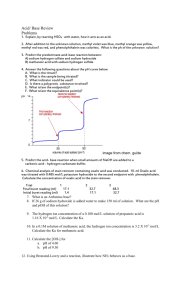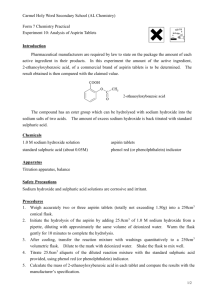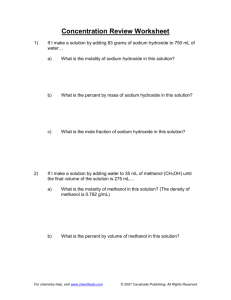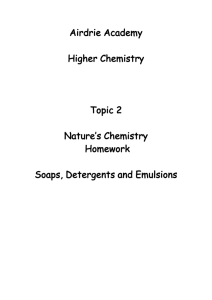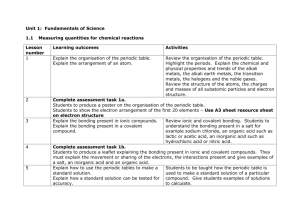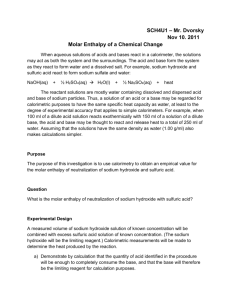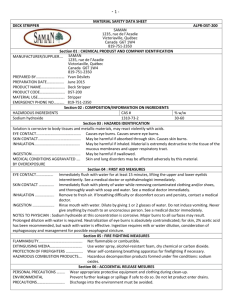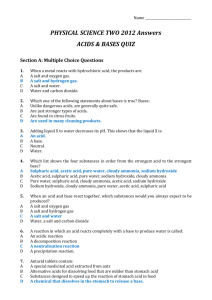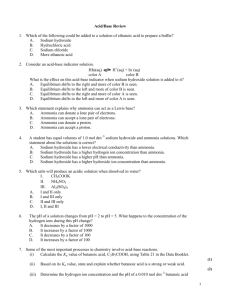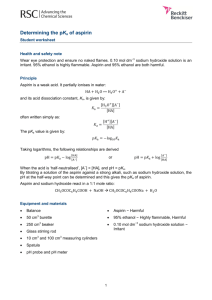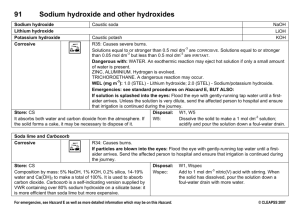Titration Worksheet
advertisement
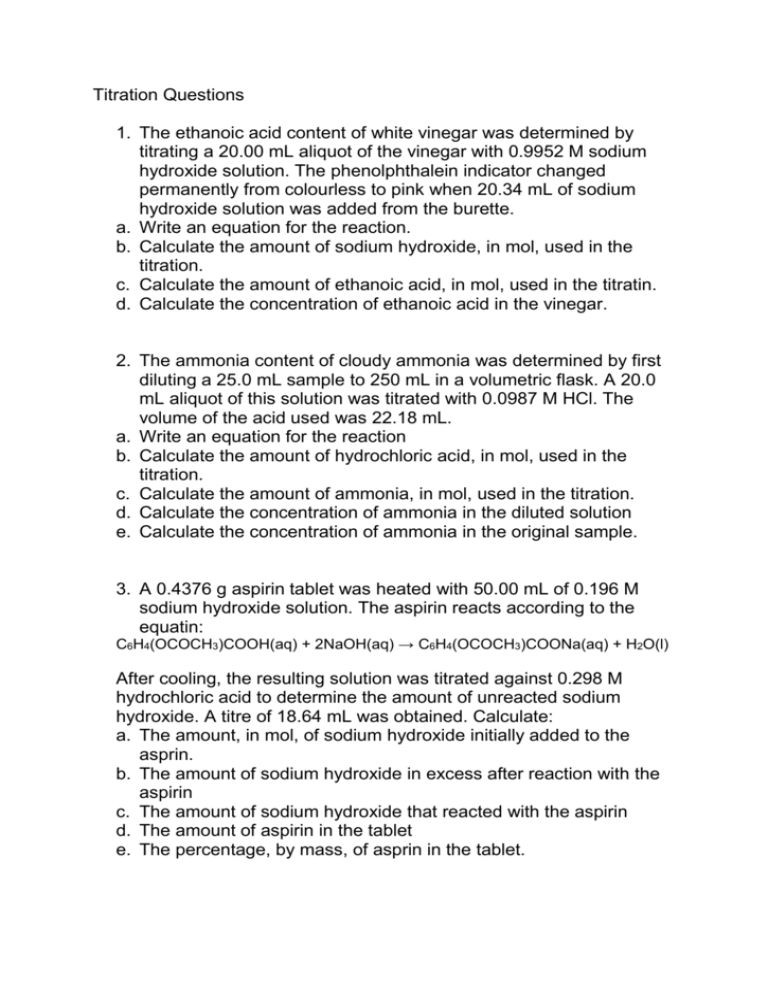
Titration Questions 1. The ethanoic acid content of white vinegar was determined by titrating a 20.00 mL aliquot of the vinegar with 0.9952 M sodium hydroxide solution. The phenolphthalein indicator changed permanently from colourless to pink when 20.34 mL of sodium hydroxide solution was added from the burette. a. Write an equation for the reaction. b. Calculate the amount of sodium hydroxide, in mol, used in the titration. c. Calculate the amount of ethanoic acid, in mol, used in the titratin. d. Calculate the concentration of ethanoic acid in the vinegar. 2. The ammonia content of cloudy ammonia was determined by first diluting a 25.0 mL sample to 250 mL in a volumetric flask. A 20.0 mL aliquot of this solution was titrated with 0.0987 M HCl. The volume of the acid used was 22.18 mL. a. Write an equation for the reaction b. Calculate the amount of hydrochloric acid, in mol, used in the titration. c. Calculate the amount of ammonia, in mol, used in the titration. d. Calculate the concentration of ammonia in the diluted solution e. Calculate the concentration of ammonia in the original sample. 3. A 0.4376 g aspirin tablet was heated with 50.00 mL of 0.196 M sodium hydroxide solution. The aspirin reacts according to the equatin: C6H4(OCOCH3)COOH(aq) + 2NaOH(aq) → C6H4(OCOCH3)COONa(aq) + H2O(l) After cooling, the resulting solution was titrated against 0.298 M hydrochloric acid to determine the amount of unreacted sodium hydroxide. A titre of 18.64 mL was obtained. Calculate: a. The amount, in mol, of sodium hydroxide initially added to the asprin. b. The amount of sodium hydroxide in excess after reaction with the aspirin c. The amount of sodium hydroxide that reacted with the aspirin d. The amount of aspirin in the tablet e. The percentage, by mass, of asprin in the tablet. 4. A 2.00 g sample of impure limestone is treated with 100 mL of 0.925 M HCl. After the reaction is complete, 19.53 mL of 1.50 M Na2CO3 solution is used to neutralise the left over acid. Calculate the percentage of CaCO3 in the limestone. 5. A sample of dry ice is suspected of being contaminated with normal ‘water ice’. To determine the percentage purity, a 0.500 g sample of the contaminated dry ice is placed into 50.00 mL of 1.000 mol L-1 sodium hydroxide solution and allowed to react. The equation for the reaction is: 2NaOH(aq) +CO2(s) → Na2CO3(aq) +H2O(l) The remaining sodium hydroxide is then titrated against some 1.000 mol L-1 hydrochloric acid solution; 28.40 mL was required to reach the end point. Calculate the percentage purity of the dry ice.
